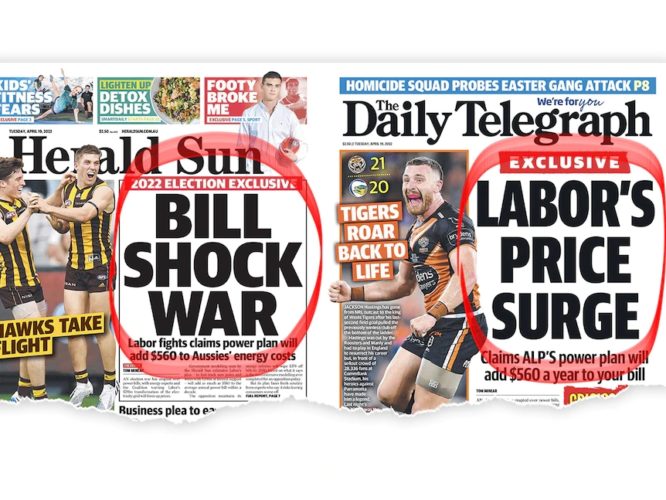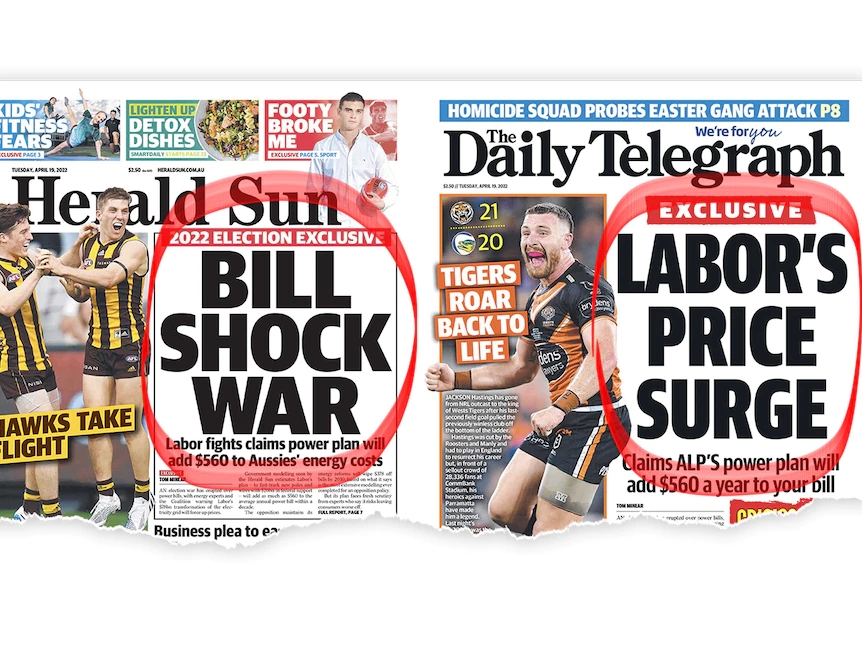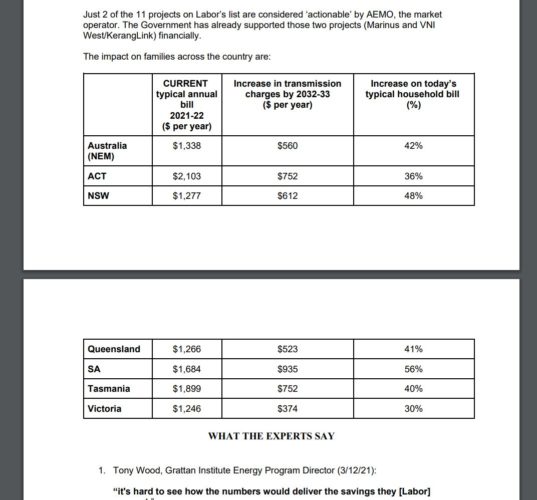I’m not sure how else to describe the Australian federal election campaign so far, beyond the words ‘sad trombone noise’.
There’s less than one day to go before the polls close. And by my own data collection of tweets from all politicians, media outlets and press gallery journalists, climate change and energy have barely featured as an issue.
The few exceptions to this are media outlets that take the problem seriously (like RenewEconomy). But the only time climate came up consistently across broader and bigger media was when some painful and ludicrous mythology was confected as a campaign tactic.
An example is the ‘safeguard mechanism’ being framed as a ‘sneaky carbon tax’ by the coalition. This policy was designed by the coalition to hover meaninglessly above corporate and industrial emissions, and Labor even hinting at the possibility of lowering it to the point of contact sparked high-pitched weeping from the government and News Corp.
This is despite Labor’s only real punishment being a paltry fee emitters would pay for some junk carbon credits – and that’s assuming Labor actually changes the mechanism in the first place.
The curious thing here is that it all kind of just fell a bit flat. The words ‘carbon tax’ just don’t inspire the same red-mist madness that they did precisely ten years ago.
Also in the ‘sad trombone noise’ category was Angus Taylor’s early intervention in the campaign. This involved a claim being distributed to media by Taylor’s office that Labor’s climate policies would result in a $560 annual increase in electricity bills. That, of course, was splashed across the front pages of several widely-circulated News Corp outlets.

It didn’t really stick. In fact, after that flurry of headlines it wasn’t mentioned again, except to critique the media’s habit of credulously repeating ‘drops’, in this great ABC News piece. One lingering curiosity of course is – who did the secret modelling that Taylor and Morrison refused to release? A few intrepid journalists asked, and failed to find out.
For the very-similar 2019 scare campaign, government favourite modeller Brian Fisher did eventually release data, which I discovered was based off some ludicrous and overblown assumptions of renewable energy integration costs. The most recent flurry of headlines was justified off Labor’s plan to support new transmission lines. But we didn’t even get an eventual, delayed release of information. It was just….nothing.
So, @tminear / @dailytelegraph have a piece out today that hits all the notes I predicted above
– Secret report that only journalist has seen
– No details / critical interrogation of modelling assumptions
– Adds to broader News Corp campaign of framing action as too costly pic.twitter.com/PawqURRBc7— Ketan Joshi (@KetanJ0) April 18, 2022
How the deception was shaped
It turns out that what happened here likely didn’t involve any “modelling” at all.
Dylan McConnell is an energy systems research fellow at the University of Melbourne Climate & Energy College and researcher at the multi-institutional Energy Transition Hub, and he passed on to me a theory about how the number was generated that’s extremely stunning in its silliness and simplicity.
The first clue is a buried in a table at the back-end of a secret PDF that was sent only to specific journalists, and that was impossible to obtain publicly.
The ABC shared it, here. It contains current bill prices, Taylor’s estimate in rising transmission charges, and then a percentage calculation of the increase in bills.
McConnell recognised those numbers in the first column – they’re the regional total annual bill costs estimated by the ‘Australian Energy Markets Commission’, or AEMC, in their latest ‘price trends’ report. It isn’t even referenced or mentioned in the ‘drop’ supplied to sufficiently incurious journalists.
Okay: that’s a big clue. But how to get from the first column – real bill costs – to the second – Taylor’s ‘prediction’ of costs under Labor? Dylan told me: “It appears they’ve taken the transmission costs from the AEMC price trends report and basically multiplied them by a factor”.
Wait, what? “i.e. taking the transmission costs in each jurisdiction and multiplying them by the ratio of transmission under the ALP plan to the current regulatory asset base for transmission (which is about $20 billion)”. That is, the ratio of Labor’s $78 billion, plus existing costs ($20 billion), compared to just existing. That’s a ratio of about 5:1, and it’s that ratio that’s been applied to the AEMC’s figures.
Yes, you’re reading this right. That number, that was splashed across a variety of front pages and was meant to be the kick-off of a major electricity scare campaign from the government was done by just clumsily multiplying one number by another, despite this being fundamentally meaningless and just very, very silly.
“I am more confident that they’ve done this or something very similar to this. It’s simply not credible that you could come up with regional transmission costs that are in the exact same ratio, across different jurisdictions, as those found in the AEMC figures for transmission in 2023/24”, McConnell said. He also provided a comparison between Taylor’s figures and his own reverse-engineering of this likely methodology. It’s tough to argue with.
It should go without saying that you can’t create a future prediction of a profoundly complex system by just smooshing two numbers together. First, this method ignores wholesale costs, which will fall due to renewable energy growth.
Second, Dylan elaborates, “the $78 billion in the Reputex modeling is all private sector investment leveraged by the [Rewiring the Nation Corporation] – not just transmission”. And Labor’s ‘Rewiring the Nation Corporation’ is meant specifically to bring costs down. Real-world transmission costs are incredibly complicated, and don’t contain just the capital expenditure from building power lines. Those costs vary through time and regions.
This isn’t first-year engineering student stuff. It’s low-level high-school stuff. The sheer grade of embarrassing here is obviously why the “modelling” – as it was described in most media coverage – was never released.
What would there be to release? Four columns in an Excel spreadsheet? This may have actually been done in Microsoft Paint. The metadata in the PDF shared by the ABC show it was produced by Dean Shachar, who is currently working as a media adviser to Prime Minister Scott Morrison.
Angus Taylor essentially disappeared from the campaign after this moment, if Twitter data are anything to go by. No one really wanted to truly run with this campaign, and now I think we have an idea why – it was generated so badly that it activated the last remaining little neurons of shame in the minds of these people.
Even the math behind the scare campaign was, it turns out, a huge sad trombone noise. How fitting, for a campaign that’s just been one long, low degrading horn blow. After three years of fires, floods and disease, you’d think climate would feature extremely prominently in the 2022 federal election, but it absolutely did not – and where it did, it was a sad rehash of old, decaying tropes. Some people did try – Independents like Zali Steggall, or Greens politicians like Adam Bandt, along with media outlets and journalists still dedicated to trying as hard as possible to get climate and energy content out. But it’s very hard to compete with the sad trombone.












